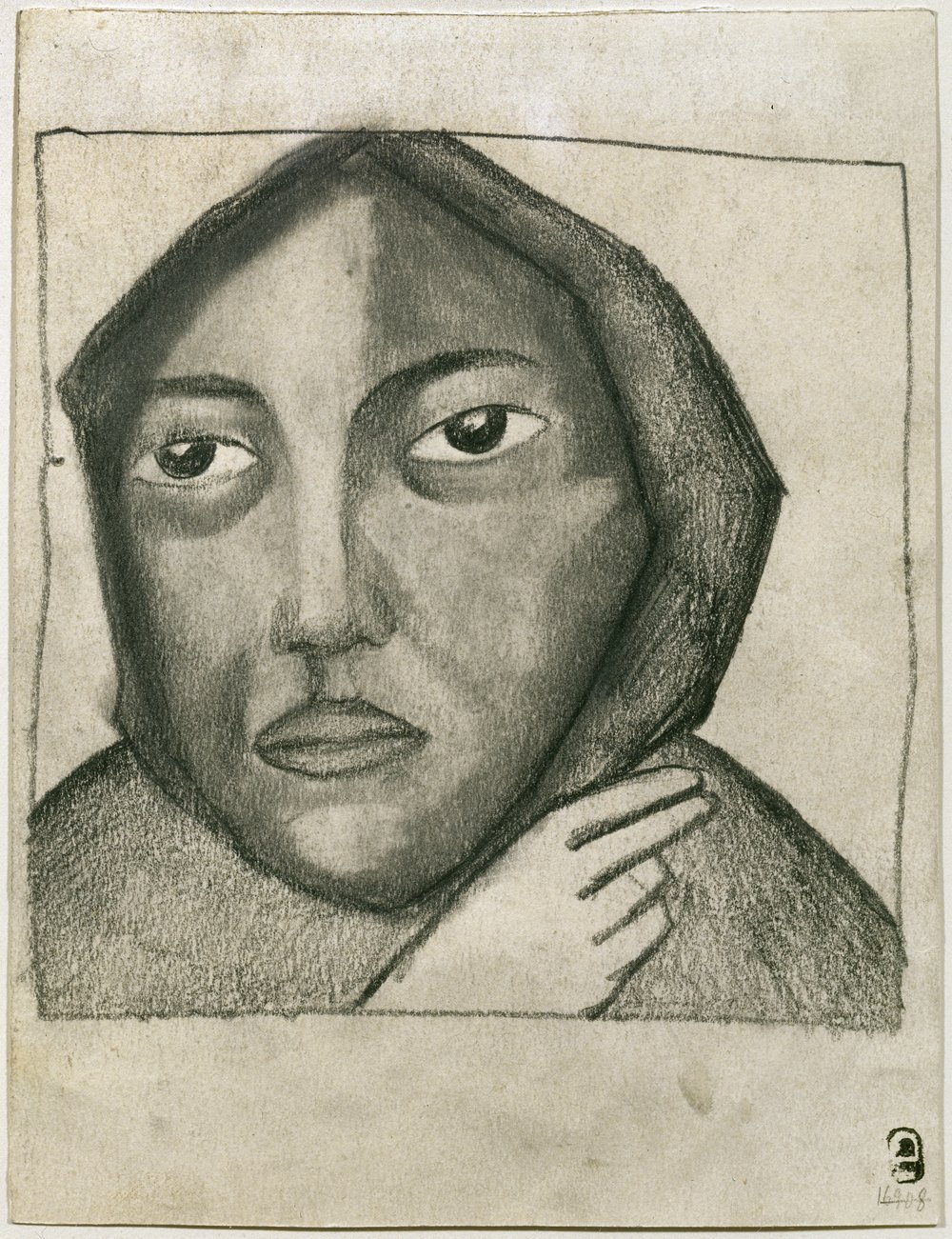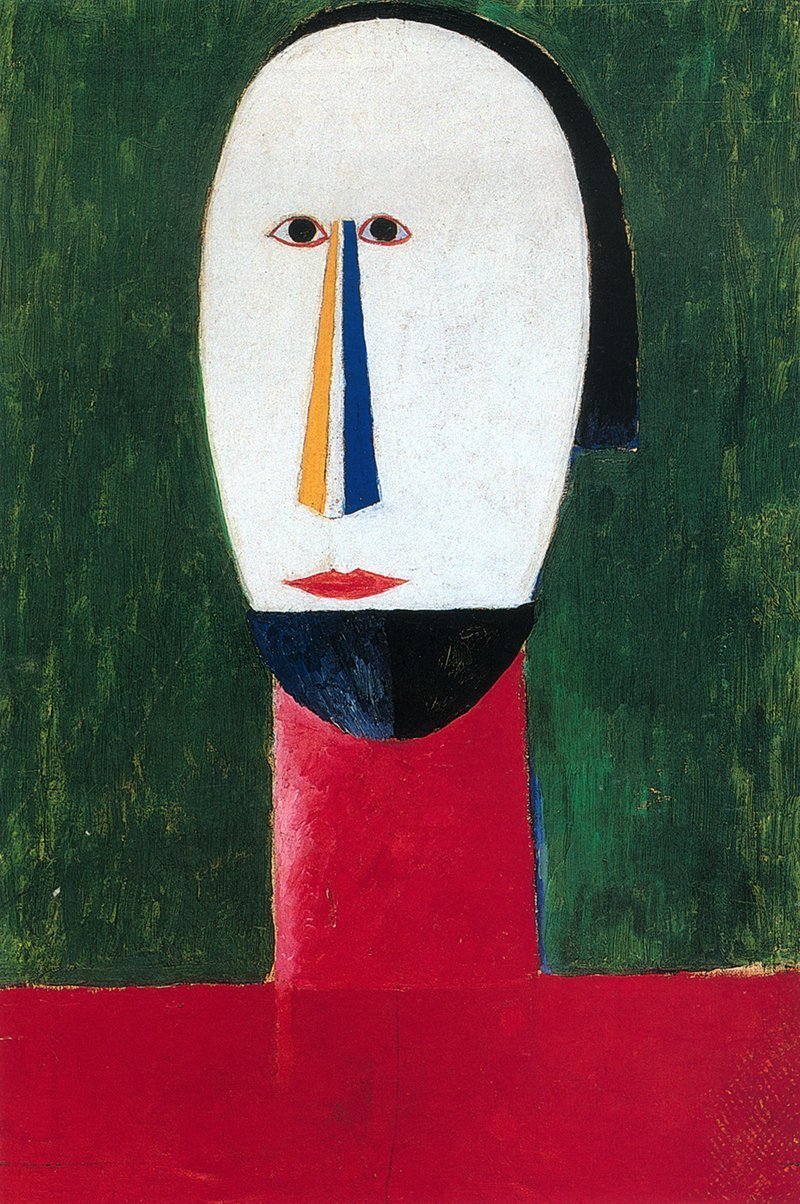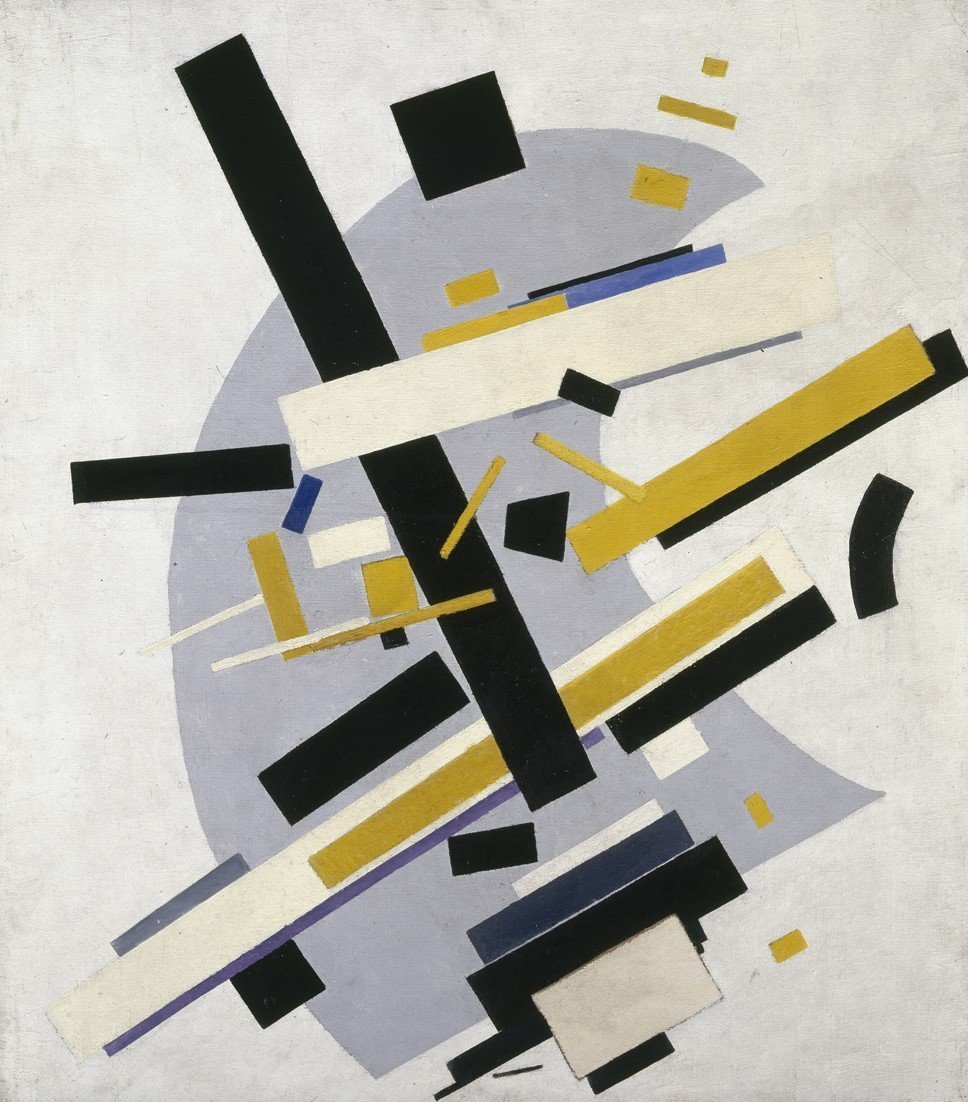Malevich honors laziness in his prophecy
A century ago, Kazimir Malevich lauded the value of laziness as opposed to work. Today, his words are a window to the future
Beauty will not save the world, laziness will. Kazimir Malevich put forward this idea a century ago, can we say he was right? Today, while a large part of the planet is fighting against a health emergency, we are timidly imagining future scenarios. We are giving a plausible form to the new beginning of social, professional, economic, cultural, and artistic relations. The Suprematism of the Russian painter and theorist was marked by proposals for new kinds of art and society, and his writings can be topical in today’s circumstances.
Malevich proposed a zero degree where all the objective and psychological themes of previous painting would fall silent. He wanted to erase the objective world expressed in the art of the previous century or early 20th century realism, but also the interpretation of this objective world by the author, like in the case of Kandinsky’s art. According to this “non-objectivity,” Malevich’s paintings would not be works of the mind but “pure products of meditation and pure contemplative objects: icons for this new way of perceiving the world.” (Haftmann, Malevich 1969)

Beside paintings, Malevich’s writings also delve into this new way of perceiving the world. His quickly written Laziness as the Real Truth of Mankind from 1921 is especially useful in this analysis. Like all the works of theory, this too is highly influenced by the historical circumstances of the time it was produced. We need to briefly specify its context before looking for a possible relation with our present, keeping also in mind that contemporary thinkers like the economist Richard Thaler have also praised laziness. In the preface of his book Misbehaving: The Making of Behavioral Economics, which also granted him the Nobel Prize in 2015, Thaler recalls an episode with his friend and colleague Daniel Kahneman (another Nobel Prize winner—here is our article about him):
What? Really? I would never deny being lazy, but did Danny [Kahneman] think that my laziness was my single best quality? I started waving my hands and shaking my head madly but Danny continued, extolling the virtues of my sloth. To this day, Danny insists it was a high compliment. My laziness, he claims, means I only work on questions that are intriguing enough to overcome this default tendency of avoiding work. Only Danny could turn my laziness into an asset. But there you have it. Before reading further you should bear in mind that this book has been written by a certifiably lazy man. The upside is that, according to Danny, I will only include things that are interesting, at least to me.
Richard H. Thaler, Misbehaving, 2015.
Just as for us today, the call for a new way of perceiving the world had come to Malevich from a profound change, destined to transform the mechanisms of production and human relationships: the October Revolution. The earthquakes that anticipated that epochal event shook artists in search of new languages as early as 1905, when Malevich had just completed his studies at the School of Painting, Sculpture and Architecture in Moscow.
At that time, European painting embarked on a quest for new expressive strategies. In 1910 Italian Futurism arrived in Russia and so did Cubism, exposing Malevich to ideas he would be strongly indebted to. However, French Late Impressionism, Divisionism, and Fauvism were still the most common references for all young Russian artists. Malevich lived in this climate, but the formal construction of his paintings soon began to break free from the objective assumptions of those traditions. Between 1913 and 1915, the first suprematist paintings were born, such as the famous Black Square on a White Background, defined by the artist as “the naked, frameless icon of my time”.

What Malevich called “the experience of non-objectivity” points to a completely new radicalism in the relationship with the world, an attitude that would demolish the usual formal elements of painting. As Werner Hofmann explained, “Malevich believed that an integral recognition of this experience could bring about a radical transformation in the perception of the world, and impose the vision of a new principle, capable of re-establishing direct communication with the totality of the world and returning man to his original unity.”
Such a radical, albeit cryptic, ontological vision could only arouse the unconditional sympathy of the new Russian ruling class, and Malevich’s Suprematism was immediately awarded the “revolutionary style licence.” The artist was then called to teach at the Moscow State Art School, and from 1919 also in Vitebsk. However, the new political institutions began attacking his artistic and political visions pretty soon, becoming systematic oppression from 1921. With the promulgation of the New Economic Policy, art was to serve the people taking the form of Heroic Realism. Malevich’s art was certainly not suiting the purposes of this new regime propaganda.
Thus, as early as 1919 the artist was forced to defend his painting with a series of writings, including violent ones, more or less showing the disappointment with the new and prevailing dialectical materialism, which he dubbed the “Marxist philosophy of the crib”. His resistance to the new regime would not rest. Kasimir Malevich continued to fight for his art and utopia until his death in 1935.
On a formal level, Malevich was the focal point of all the research that developed in Russia in the first and second decade of the 20th century, from Kandinsky to Pevsner, Lizickij to Tatlin and Larinov. Even if in Europe several artists were moving in a similar direction albeit with different outcomes, the development of Concrete art—from Theo van Doesburg to the Abstraction-Création group and their influence on architecture—could have hardly been possible without Malevich’s pioneering contribution. (Haftmann, Malevich 1969)

When one considers its aspiration to provide cosmic knowledge and a universal version of art, Suprematism seems to have some of its roots in Asian philosophies. (Finizio 1990) On the other hand, in more earthly terms, art is for Malevich the exemplary realization of an existential project, a model that poses itself as an “alternative to the historical line of development of humanity, and postulates the need for a radical rupture according to a different project of existence.” (Rosso, Malevich 1969)
But what is this project? Malevich reveals a plan in his writings on Suprematism, but also in pamphlets such as Laziness as the Real Truth of Mankind, written in 1921 in response to the political situation in Russia after the Revolution. At that historical moment, for Malevich neither capitalism nor Marxism-Leninism could allow the birth of a “new man.” According to him, once a first political form has been overcome, so should be the one that follows.
Today’s reality cannot be compared to post-revolutionary Russia. However, Malevich’s context can remind us of our present. Perhaps we are also at one of those junctions of history where economic and social forms, as well as political visions, must come to terms with a sort of tabula rasa. Today we should imagine the functioning of a new world, at a time when issues related to social inequalities, the welfare state, and the role of technology are becoming more urgent.
In his pamphlet, Malevich writes about two issues that are crucial even now. The first is what we call “degrowth,” the second is related to the importance of machines. The topic of degrowth, strongly debated in the West in the last twenty years but with little charge left is now back under a completely new light, less cloaked in ideology and closer to pragmatism. The discourse on machines, which for Malevich allowed the liberation from work, comes back to us in terms of artificial intelligence and algorithms, as machines becoming instruments to fight epidemics and protect the population.
What we propose here are a few extracts from Malevich’s pamphlet on laziness, with two preliminary warnings. The first concerns the title, in which the term laziness is to be understood more as “non-activity”—this is how it appears in some translations. The Latin contraposition between otium and negotium does not apply here, because otium is a category connected to thought, and in Russian everything that is “conscience” is always seen with mistrust by Malevich, who doesn’t mean laziness or non-activity as a contemplative life opposing a working life. For him, non-activity in life corresponds to non-objectivity in art.
Secondly, it is not useful to look for a precise logic in Malevich’s pamphlet, as there doesn’t seem to be one. The author was striving for a new utopia, posing new questions for precisely this reason. As to the answers, they are perhaps best found in his paintings.
From Laziness as the Real Truth of Mankind, by Kazimir Malevich:
[…] “Laziness is the mother of all vices”, which is how the collective wisdom of humanity and all peoples has branded this particular style of human activity. But for myself, I’ve always been of the opinion that this condemnation of laziness is unfair. Why is work so great? Why is it elevated to the throne of praise and fame, while laziness is forced to sit in the pillory and all the lazy are shamed and have to wear the burden of viciousness; meanwhile the laborious are covered with fame, given presents and feasted? To me, it has always seemed like this is the exact opposite of what should happen. Work has to be cursed, as it has come down to us from the legend of Paradise, and laziness should be that towards which all humanity has to strive. […]
[…] So, in order to escape death, man has brilliantly come up with a life-form in which all must work and no one is allowed to be a bum. That’s the reason that the socialistic system that leads to communism, struggling against all previous systems, brings all of humanity into the single way of labor, and leaves behind all bums. This is the meaning of the most pitiless of all laws in the most humane of all systems: he who doesn’t work, doesn’t eat. This is also why the communist system prosecutes capitalism, because the capitalist encourages the bum and because the ruble definitely leads to laziness. […]
[…] In the collective labor system, however, death stands before each, and each has only one task; through labor, and the products of labor, to save himself. Otherwise, as said, the threat of hunger. This socialistic system of labor aims, in its natural, unconscious processes at bringing all of mankind to work, in order to improve productivity and preserve security and strengthen humanity and through the increased level of productivity to assure human existence. Naturally this system, that bothers not just about the particular individual, but about all of humanity, is absolutely right. Exactly as the capitalist system guarantees the right and the freedom to work, bringing about the increase of money in the bank, in order to secure laziness in the vague future. That presumes that the ruble is one of those signs that that seduces us because it promises that which everyone dreams of: the happiness of laziness. In fact, that is the meaning of the ruble, the ruble is in itself nothing other than a little piece of laziness. […]
Bibliography
Kasimir Malevič, Suprematismo, 1969. De Donato Editore.
Luigi Paolo Finizio, L’Astrattismo costruttivo – Suprematismo e Costruttivismo, 1990. Editori Laterza.
November 25, 2020
